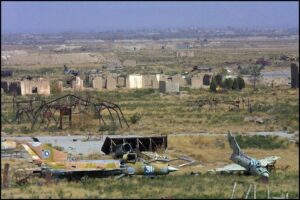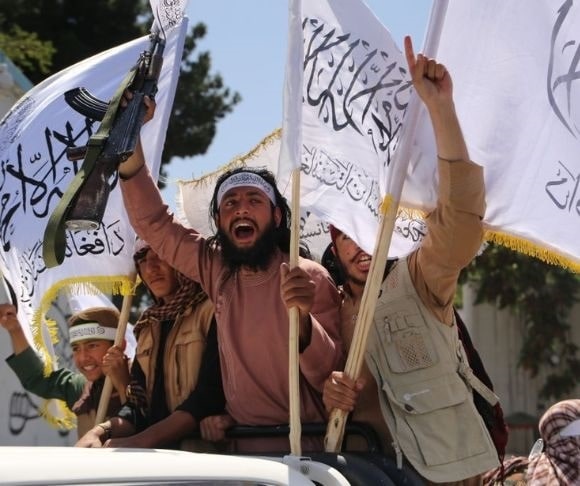If the Biden national security team thought the ham-handed withdrawal from Afghanistan would fade into history, they should think again. On Thursday, July 27, the House Foreign Affairs Committee, Subcommittee on Oversight and Accountability, heard from witnesses about “A Failure to Plan: Examining the Biden Administration’s Preparation for the Afghanistan Withdrawal.” The hearing is another in a series of committee meetings to dig fully into the failure to plan, leading to a US surrender in a totally botched retreat from Kabul.
“The President’s withdrawal was a complete and utter catastrophe. The images of people hanging off of planes and desperate parents handing their babies over the airport walls to soldiers are seared into our country’s collective conscience,” Rep. Brian Mast (R-FL), subcommittee chair and an 11-year Army veteran, said after taking a moment before the hearing began to recognize Gold Star families who lost loved ones in the suicide bombing at Hamid Karzai International Airport (HKIA) Abbey Gate entrance. “In the words of the administration spokesperson, Jennifer Psaki, the mouthpiece…she said the president was the ultimate decision-maker,” he continued. It is important to remember that in learning from the witnesses what took place in Kabul.
Strategic Planning Failed
The first of the witnesses to testify before the committee was US Army Colonel (Retired) Seth Krummrich, former chief of staff, Special Operations Command component of US Central Command. In his oral testimony, Krummrich relayed the theme that would underlie the hearing testimonies and answers to questions. He said:
“[It’s] Important to acknowledge our three strategic objectives and end states for the withdrawal. The first was to maintain an ongoing diplomatic presence. The second was to support Afghan security forces, people, and the government, and the third was to prevent Afghanistan from, once again, becoming a safe haven for terrorism. We were not successful.”
Krummrich told the committee about failure after failure of the most senior leadership to make decisions that might provide some hope of success. From picking and choosing selective intelligence that supported presuppositions to selecting an initial purely symbolic withdrawal date of 9/11 without considering the “worst-case” scenarios set the withdrawal operation on a course of inevitable catastrophe. “I think, Colonel Krummrich, you eloquently talked about how he recklessly disregarded his own National Security Council, his own generals, and the intelligence community, that we were being briefed at the same time,” chairman of the full House Foreign Affairs Committee Michael McCaul (R-TX) explained. “I believe the majority stakeholder for the failed transition and evacuation is the Biden Administration as they set the timetable and operation in motion,” Krummrich said in his written testimony.
Leaving Afghanistan Could Have Been Orderly and Safer

(Photo by Aykut Karadag/Anadolu Agency via Getty Images)
Also testifying before the committee was Command Sergeant Major, US Army, Jacob Smith, from the 10th Mountain Division, still on active duty. Command Sergeant Major (CSM) Smith made it clear to the subcommittee that he was speaking as a private citizen to what he believed to be a true and accurate account of his participation in the Afghanistan withdrawal. CSM Smith’s service in the waning days of the withdrawal provided a clear picture of the administration’s missteps.
One avoidable and tragic decision was to close Bagram Air Base in favor of using the HKIA in Kabul. To that end, Representative Elise Stefanik (R-NY) asked CSM Smith, “Why did you advise the (State Department) site survey team against using HKIA, and were your concerns taken into consideration?” Smith explained, “From my standpoint Bagram had a much more tactical advantage to conduct a NEO (Non-combatant Evacuation Operation) out of.” He described the Bagram Air Base as “much easier to defend. The entry control points were very much defended in depth.” When it came to handling the refugees looking to leave Afghanistan, he said, “It would have been very easy to create a filtering process within those entry control points, to filter out those who needed to be evacuated and those who didn’t.”
But as we know now, the State Department chose HKIA as the departure point, an airport shared with civilian aviation, “not completely controlled by the military,” and surrounded by “the city of Kabul with its 4.4 million residents,” Smith recounted in his written statement. The consequence of that decision was that a suicide bomber was able to wind his way through the frenzied and chaotic crowds and blow himself up along with 170 Afghan civilians and 13 brave American service members. This did not need to happen.

Bagram Airport (Photo by Georges MERILLON/Gamma-Rapho via Getty Images)
Additionally, according to Smith, “Bagram held the logistical capability to meet the requirements of 130,000 people, HKIA did not.” The State Department site survey team brought up the issue of personal comfort, to which Smith responded there were “very comfortable living conditions to accommodate those who wished for such comforts.” Bagram had dining facilities, thousands of gallons of potable water, “over $2 million worth of food” on base, and HKIA had none of those advantages. Nonetheless, the State Department and presumably the “ultimate decision-maker” chose HKIA – and the opportunity of an abbreviated lifetime for a suicide bomber.
For nearly-three-and-a-half hours, the subcommittee heard a litany of failures by an administration seemingly hell-bent on a course for disaster to heed sound advice. As is always the case in armed conflict, the brave and resourceful combat troops and airmen make the sacrifices and persevere, often in the face of anemic and incompetent leadership at the highest levels. Such was the case in Kabul in the fading days of August 2021. Over 120,000 Americans and Afghan refugees were evacuated. Over 10,000 were left behind. The lingering memory of the debacle of the US retreat from Kabul is the “ultimate decision-maker’s” legacy.




